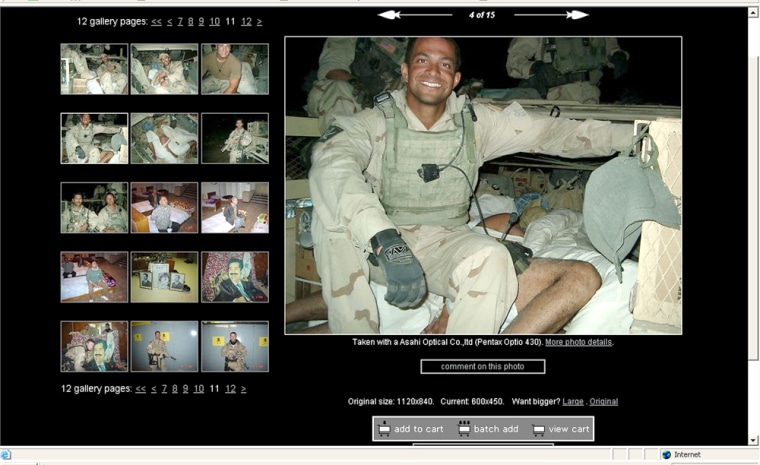A former military spokesman in Iraq said Saturday new pictures showing apparent abuse of Iraqi prisoners were the acts of an isolated few but will be used by some to try to tarnish the entire U.S. military.
Gen. Mark Kimmitt, now based in Qatar, spoke on the pan-Arab television network a day after the U.S. military launched a criminal investigation into photographs that appear to show Navy SEALs in Iraq sitting on hooded and handcuffed detainees.
Other photos show what appear to be bloodied prisoners, one with a gun to his head.
The photos, found by an Associated Press reporter, were among hundreds in an album posted on a commercial photo-sharing Web site by a woman who said her husband brought them from Iraq after his tour of duty.
Evidence of early abuse
Some of the photos have date stamps suggesting they were taken in May 2003, which could make them the earliest evidence of possible abuse of prisoners in Iraq. The far more brutal practices photographed in Abu Ghraib prison occurred months later.
The photos were turned over to the Naval Criminal Investigative Service, which instructed the SEAL command to determine whether they show any serious crimes, said Navy Cmdr. Jeff Bender, a spokesman for the Naval Special Warfare Command in Coronado, Calif. That investigation will determine the identities of the troops and what they were doing in the photos.
Kimmitt, the spokesman in Iraq at the time of the Abu Ghraib scandal , said he believes the photos show the acts of an isolated few.
After months of investigation, Kimmitt said the number of U.S. military troops involved in acts of abuse has been found to be very limited.
Asked by al-Jazeera if such pictures are a problem, Kimmitt said they are certainly a “tool” and some will try to use them to show the U.S. military in a negative light.
After outraged reaction from the Arab world to the first Abu Ghraib pictures, President Bush appeared on Arab television in May and said the torture was the act of a few.
Strong reaction abroad
The new photos drew strong reactions in Arab media as did the earlier ones.
“The two scandals confirm the image about the Americans known in the Middle East: that the Americans are not a charity or a humanitarian organization that is leading an experiment of democracy,” said Sateh Noureddine, managing editor of the Lebanese leftist newspaper As-Safir. “Rather, (the U.S. government) is leading a retaliatory operation following the Sept. 11 attacks.”
Noureddine said the photos “will definitely be front page news” in his paper’s Monday edition. Yonadem Kana, a member of an Iraqi government advisory and oversight group, said the photos were “rare cases exaggerated by the media.”
One photo on the front page of the daily Egyptian newspaper Al-Ahram showed three hooded prisoners pressed against one another on a floor with what appear to be white sheets wrapped around their torsos. The photo caption read: “Signs of a new scandal.”
On a Web site known for its militant content, contributors also posted some of the photos, showing the faces of the Navy SEALs — one with a serviceman sitting on top of a group of prisoners — but with the faces of the prisoners blackened. The photos were similar to those carried by the satellite stations but had comments on them such as “God destroy America,” and “God help the Mujahedeen,” or holy fighters.
It is unclear who took the pictures.
